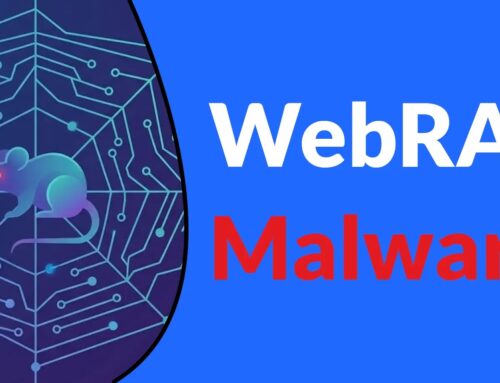
Hackers Weaponize Amazon Simple Email Service to Send 50,000+ Malicious Emails Per Day
The Silent Weapon: How Hackers Are Exploiting Amazon SES for Large-Scale Phishing Operations
In the evolving landscape of cyber threats, attackers constantly seek novel methods to scale their operations and evade detection. A recent, sophisticated campaign has brought this reality into sharp focus: cybercriminals are now weaponizing Amazon Simple Email Service (SES), a legitimate bulk email platform, to orchestrate massive phishing attacks. This insidious development represents a significant escalation in cloud service abuse, transforming a trusted infrastructure into a potent tool for credential theft and financial fraud, capable of delivering over 50,000 malicious emails daily.
As cybersecurity professionals, understanding these shifts is paramount. This post will dissect how adversaries are leveraging Amazon SES, the implications for businesses and individuals, and, most importantly, the actionable steps organizations can take to protect themselves.
Understanding the Threat: Weaponizing Amazon SES
Amazon SES is a highly reliable, scalable, and cost-effective email service designed for legitimate mass email sending by businesses. Its robust infrastructure and high deliverability rates make it attractive for marketing, transactional emails, and notifications. However, these very advantages make it a prime target for malicious actors.
The core of this campaign involves threat actors gaining unauthorized access to legitimate AWS accounts that have SES configured. This compromise typically begins through:
- Credential Theft: Phishing attacks targeting AWS account credentials.
- Weak Security Practices: Poorly secured AWS access keys or IAM roles
- Supply Chain Attacks: Compromise of third-party services integrated with AWS.
Once inside, attackers configure SES to send out high volumes of phishing emails. These emails are meticulously crafted to appear legitimate, often impersonating well-known brands, financial institutions, or even internal company communications. The emails typically contain links to fake login pages designed to harvest credentials or trick users into downloading malware.
The scale of this operation – over 50,000 emails per day – highlights the efficiency and difficulty in tracing these attacks. Because the emails originate from a seemingly legitimate and high-reputation AWS domain, traditional email security filters may struggle to flag them as malicious, increasing the likelihood of successful delivery to an inbox.
Tactics, Techniques, and Procedures (TTPs)
The campaign exhibits several notable TTPs that security analysts should be aware of:
- Domain Spoofing and Impersonation: Phishing emails often spoof legitimate domains or use look-alike domains to deceive recipients.
- Payload Delivery: Links within the emails lead to sophisticated phishing pages, often hosted on compromised websites or other cloud services, designed to mimic login portals for popular services (e.g., Microsoft 365, Google Workspace, banking platforms).
- Credential Harvesting: The primary objective is frequently credential harvesting, enabling subsequent account takeovers or lateral movement within target organizations.
- Obscured Origins: By using SES, attackers bypass many conventional spam filters that rely on blacklists or reputation scores tied to specific sending IPs. Amazon SES’s distributed infrastructure makes pinpointing the exact origin more challenging.
- Automation: The high volume suggests a significant degree of automation in email generation and sending, accelerating the campaign’s reach.
Implications for Businesses and Individuals
The weaponization of Amazon SES carries significant implications:
- Erosion of Trust: The abuse of trusted cloud platforms erodes the overall trust in digital communication channels.
- Increased Phishing Success Rates: Emails originating from high-reputation services like AWS SES are more likely to bypass spam filters, increasing the attack’s effectiveness.
- Brand Damage: Organizations whose AWS accounts are compromised and used for sending malicious emails may face reputational damage.
- Financial Losses: Successful phishing attacks can lead to direct financial fraud, data breaches, and ransomware infections following credential theft.
- Compliance Risks: Data breaches resulting from these attacks can lead to significant regulatory fines and legal liabilities.
Remediation Actions and Proactive Defense
Mitigating the risk posed by adversaries weaponizing services like Amazon SES requires a multi-layered approach focusing on prevention, detection, and response. While there isn’t a specific CVE associated with the abuse of legitimate services, the underlying vulnerabilities often stem from misconfigurations or compromised credentials. Organizations should implement the following:
For AWS Account Holders (Preventing SES Abuse):
- Strong IAM Policies and Least Privilege: Implement the principle of least privilege for all IAM users and roles. Ensure that only necessary users and services have permissions to send emails via SES. Regularly review and audit IAM policies.
- Multi-Factor Authentication (MFA): Enforce MFA for all AWS accounts, especially root accounts and those with administrative privileges. This is a critical barrier against credential theft.
- Regular Security Audits: Conduct frequent security audits of your AWS environment, focusing on IAM configurations, access keys, and SES sending limits.
- Monitor CloudTrail Logs: Proactively monitor AWS CloudTrail logs for unusual activity related to SES, such as sudden spikes in email sending, configuration changes, or unauthorized access attempts.
- SNS Notifications for SES Activity: Configure Amazon SNS notifications for SES sending limit warnings or bounces that could indicate abnormal usage.
- Restrict SES Sending: If you don’t use SES for bulk emailing, consider restricting its sending capabilities.
For All Organizations and Individuals (Defending Against Phishing):
- Robust Email Security Gateways: Implement advanced email security solutions that perform deep content analysis, URL reputation checks, and DMARC, DKIM, and SPF validation.
- DMARC, DKIM, and SPF Implementation: Ensure your domain’s DMARC, DKIM, and SPF records are correctly configured and enforced. This helps prevent domain spoofing and verifies the authenticity of email senders. For more information on DMARC, refer to https://dmarc.org/.
- Security Awareness Training: Continuously educate employees on recognizing and reporting phishing attempts. Emphasize the dangers of clicking suspicious links or opening unsolicited attachments.
- Password Managers and Unique Passwords: Encourage the use of password managers and unique, strong passwords for all accounts to limit the impact of credential compromise.
- Endpoint Detection and Response (EDR): Deploy EDR solutions to detect and respond to malicious activity on endpoints, even if a phishing email bypasses initial defenses.
- Incident Response Plan: Have a well-defined incident response plan in place to quickly address and contain the impact of successful phishing attacks.
Relevant Tools for Detection and Mitigation
| Tool Name | Purpose | Link |
|---|---|---|
| AWS CloudTrail | Logging and monitoring AWS API calls and account activity. Essential for detecting anomalous SES usage. | https://aws.amazon.com/cloudtrail/ |
| Amazon GuardDuty | Threat detection service that continuously monitors for malicious activity and unauthorized behavior to protect AWS accounts and workloads. | https://aws.amazon.com/guardduty/ |
| MFA (Multi-Factor Authentication) | Adds a critical layer of security to AWS accounts by requiring more than just a password. | https://aws.amazon.com/iam/features/mfa/ |
| Email Security Gateway (e.g., Proofpoint, Mimecast) | Advanced threat protection, URL rewriting, sandboxing, and brand impersonation detection for inbound and outbound email. | (Provider Dependent) |
| KnowBe4 / Cofense / SANS Security Awareness Training | Platforms for conducting phishing simulations and security awareness training for employees. | (Provider Dependent) |
Conclusion
The weaponization of Amazon SES underscores a critical truth in cybersecurity: legitimate cloud services, when misconfigured or compromised, can become formidable tools in the hands of adversaries. This campaign highlights the need for continuous vigilance, strong security hygiene, and a proactive defense strategy. By understanding the tactics involved and implementing robust preventive and detective controls, organizations can significantly reduce their exposure to these sophisticated phishing operations. The battle for digital security is dynamic; staying informed and agile is our greatest defense.





